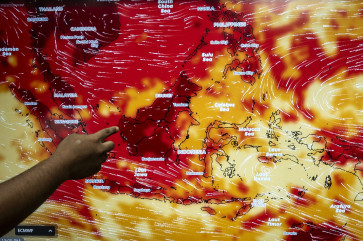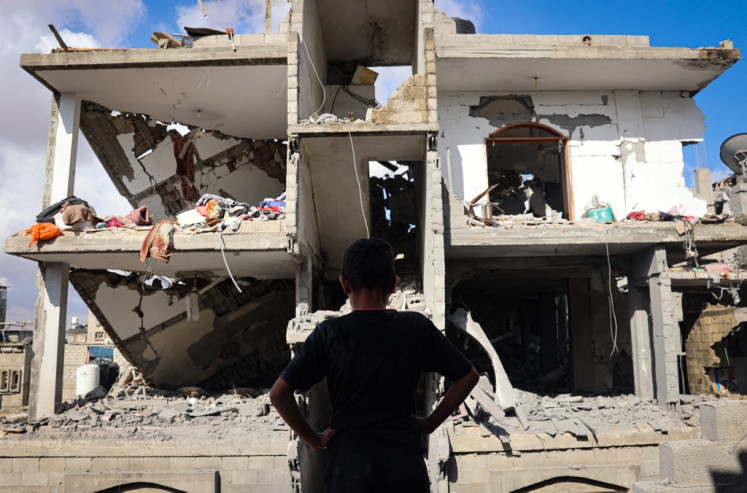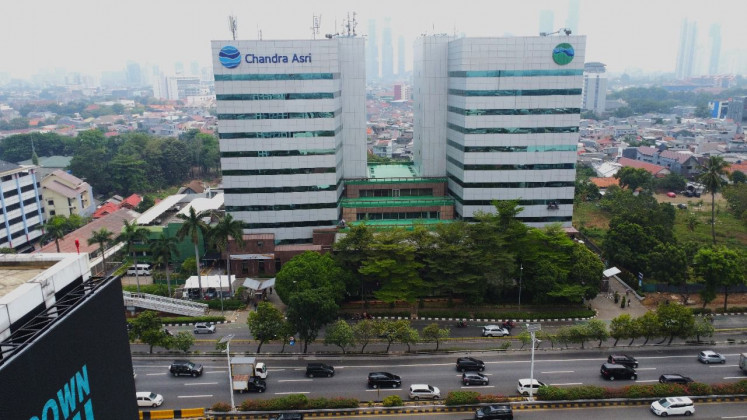Emiria Soenassa: An auspicious artist
Wanita Sulawesi, an oil on canvas by Emiria Soenassa, from the collection of Iskandar Waworuntu
Change Size

W
span class="inline inline-left">Wanita Sulawesi, an oil on canvas by Emiria Soenassa, from the collection of Iskandar Waworuntu.: Courtesy of Bentara Budaya Jakarta Emerging as a liberated female artist from an era dominated by men seeking a national style but whose themes and imagination were limited to Java, Emiria Soenassa became the first and only artist who, in the quest for a new nation, had the imagination to depict a modern, united Indonesia in its multifaceted diversity.
The opening of a solo exhibition of paintings by Emiria Soenassa (1895-1964) on Dec. 9 at Bentara Budaya Jakarta may be long overdue. Nevertheless, it is a moment of truth, for Emiria takes a special place in the history of visual arts in Indonesia, after long being cast aside in comparison to her male peers.
In fact, no Indonesian art historians have undertaken a serious study or research on her art. We are just fortunate Heidi Arbuckle dedicated part of her study time to explore Emiria Soenassa, her life and her oeuvre.
Emiria is also profiled in Indonesian Women Artists — a book written by Carla Bianpoen, Farah Wardani and Wulan Dirgantoro and published in 2007 by Yayasan Seni Rupa Indonesia.
Her works encompassed the entire Indonesian archipelago, featuring the people from various islands, like Dayak hunters and brides, women from North and South Sulawesi, indigenous people from the Moluccas, and Papua, or landscapes in the moonlight.
She also painted small traders in the market place, women reaping the harvest, and nudes. Following a style of her own — rigid technical skills stifled free expression, she said — her works differ from those of her peers.
She used a mysterious glow to lighten up dark hues in brown-blue, black-brown or dark subdued green-brown and pink, often with a fluorescent, surrealistic touch.
She was also groundbreaking in other ways. As the paintings in the show reveal, the women she painted emanated a free and independent spirit, with eyes looking straight instead of down.
A prolific painter, she made her own paint and participated in various exhibitions between 1940 and 1950, joining peers like Affandi, Basuki Adullah, and others, besides also staging solo exhibitions.

Emiria didn’t fit the image of women of her time. Before she entered the art world in Batavia in the early 1930s, she had been a professional nurse, a plantation manager and a gold miner in Kalimantan who had traveled as far as Europe.
She learned painting at the age of 40 and was active in Persagi, the association of draftsmen and painters that was founded amidst the rise of nationalism, and sought a nationalist style.
She was a volcano, said Sudjojono of her, which erupts and sleeps at will. Capricious and daring, Emiria Soenassa was also a loner.
Her life is shrouded in mystery, even her birthplace is not known for certain: it could be in North Sulawesi or in northern Moluccas.
In the late 1950s she disappeared without leaving a trace, until it was found she had died in Lampung in 1964.
She had left her paintings with her friend and neighbor Jane Waworuntu, whose heirs have inherited whatever was left.
The works in this exhibition are for the most part from that collection, while some have been borrowed from collectors.
Emiria Soenassa, Sang perintis
Solo exhibition
Dec. 9-18
Bentara Budaya Jakarta
Jl. Palmerah Selatan 17
Jakarta 10270









